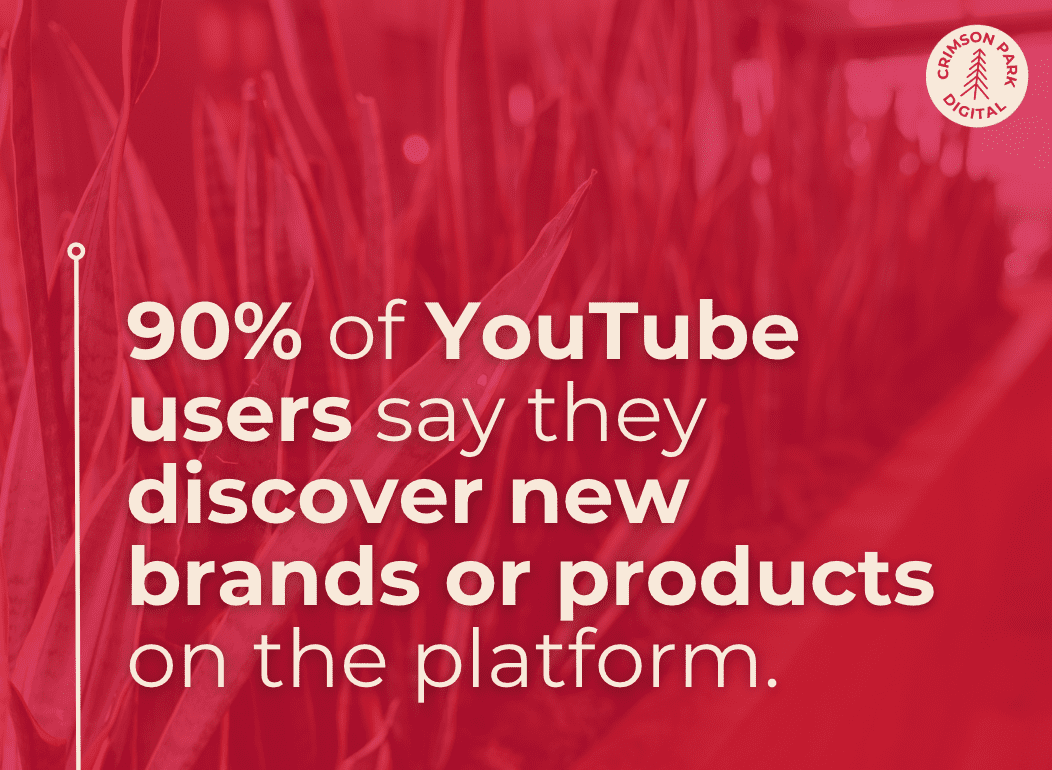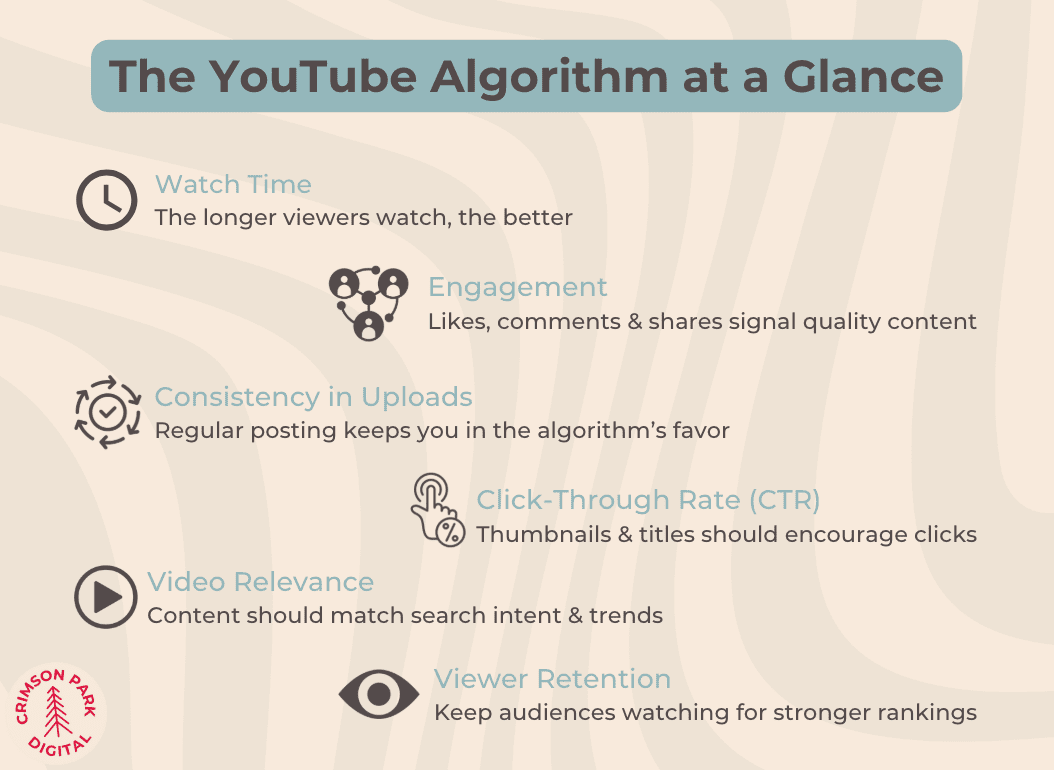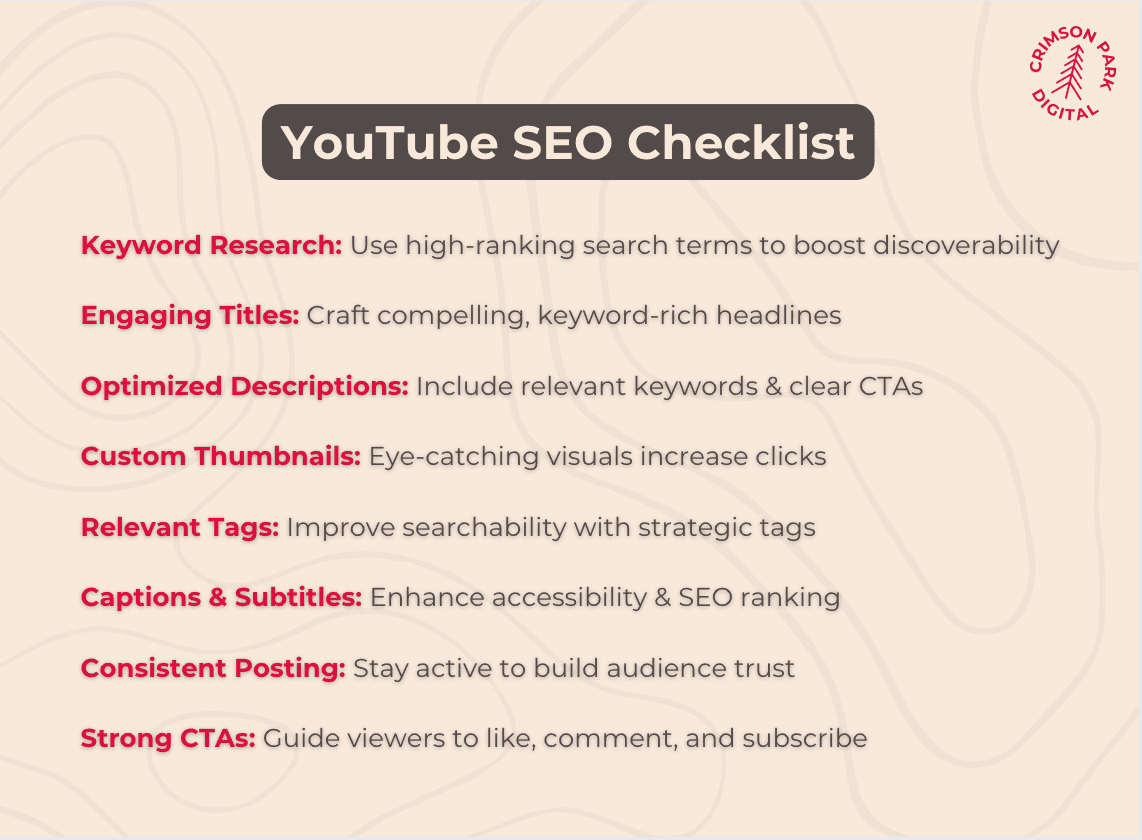Did you know YouTube is the second-largest search engine in the world? With billions of searches happening every day, it’s a goldmine for brands looking to increase visibility and connect with their audience. But simply uploading videos isn’t enough—you need the right strategy to stand out.
That’s where YouTube SEO comes in. Optimizing your videos can mean the difference between getting lost in the crowd and landing at the top of search results. More views, higher engagement, and stronger brand awareness—it’s all within reach when you know how to leverage YouTube’s algorithm.
So, how do you ensure your content gets discovered by the right audience? This guide will walk through the must-know YouTube optimizations that can take your brand’s online presence to the next level.
Understanding YouTube’s Algorithm and Its Impact on Your Brand
Understanding YouTube’s algorithm is crucial for brand growth. The algorithm decides which videos surface to viewers and when. And aligning your video content with its preferences, can significantly help improve your video content’s visibility.
YouTube considers several factors when ranking videos. These include watch time, engagement, and relevance. Greater watch time and higher engagement signal quality content, which can lead to better rankings. A good grasp of these elements can transform your YouTube presence for the better. This understanding allows you to craft content that not only appeals to viewers but also meets YouTube’s criteria for visibility and success.

The Role of Keyword Research in YouTube SEO
Keyword research is foundational in YouTube SEO, just like standard Google search. It helps you understand what your audience is searching for. Targeting popular search terms that are the most relevant for your brand will help enhance your videos’ visibility.
To start, identify keywords with low competition and high search volume. This involves using tools like Google Trends or YouTube’s search suggestions. These free resources provide insights into what viewers want to watch.
Effective keyword research can inform many aspects of your video content. Here’s how to utilize your findings:
- Use keywords in video titles for relevance.
- Include them in descriptions to boost discoverability.
- Add tags to enhance search results.
By focusing on strategic keywords, you can improve your YouTube video’s chances of reaching your target audience.
Crafting Engaging Titles and Impactful Descriptions
Crafting engaging titles and impactful descriptions is key to attracting more of the right viewers. Your title is often the first thing potential viewers see. It should be intriguing and informative, with a hook that pulls them in.
Titles must balance relevance with click-through potential. They should clearly convey the video’s content and use primary keywords early in the title.
Descriptions provide more context for your video. They should include detailed information and relevant keywords which helps YouTube’s algorithm rank your video higher.
Using a call-to-action (CTA) in descriptions helps guide viewers and encourage action like subscribing or watching more content. Providing a “next step” increases the value of your content and helps support other marketing goals and initiatives.
Video Titles: Balancing Relevance and Click-Through Rates
Titles need to captivate and inform, grabbing attention while staying true to the content. Aim for clarity without losing intrigue and include primary keywords early. This aids SEO and confirms topic relevance. Ensure the title reflects the video accurately.
Avoid using clickbait, however. Misleading titles disappoint viewers and harm your brand credibility (which is easy to lose but hard to earn). A well-crafted title enhances both views and trust.
Video Descriptions: Incorporating Keywords and CTAs
Descriptions should detail what viewers can expect, naturally using keywords throughout the text. This boosts searchability and video content understanding.
Include a call-to-action to prompt viewer interaction and suggest watching another video or subscribing. Remember, engagement is a key algorithm signal, so the more users watch, the more future viewers you’ll attract! Keep descriptions clear and concise and include links to relevant content (or your website).

Enhancing Video Visibility with Tags and Thumbnails
The Art of Tagging: Best Practices for YouTube SEO
Tags and thumbnails are crucial for video discoverability and are sometimes an overlooked step in the video publishing process. Tags help YouTube understand video content and improve your chances in the search results, especially when they are aligned with your keywords. Avoid overstuffing with irrelevant tags, however. This can confuse algorithms and viewers, being more harm than good. Quality, not quantity, determines effective tagging.
Using diverse, relevant tags covers multiple search angles too. This increases the chances of reaching a broader audience and scaling your content faster.
[newsletter]
Thumbnails: Your First Impression Counts
Additionally, thumbnails serve as a video’s visual preview. A compelling thumbnail can capture interest–similar to video titles, this needs to be a hook. It’s your chance to make a memorable first impression!
Thumbnails need to be eye-catching and relevant, and a well-designed thumbnail should draw viewers immediately. Text overlays can also make thumbnails more informative, setting the stage for a compelling viewing experience.
Engaging Your Audience for Better YouTube Rankings
Engagement is a vital aspect of YouTube SEO and more interaction leads to higher rankings. Comments, shares, and likes service as social proof of your content’s quality, so encourage these actions both in your description and video itself. Building a loyal community elevates your channel’s status, and personal interaction fosters trust and loyalty. Engaged audiences tend to revisit and share your channel, contributing to long-term success.
Encouraging Viewer Interaction and Community Building
Prompt your viewers to comment and share their thoughts. Ask questions to spark discussions and respond to comments to strengthen community bonds.
Collaborations with other creators can also expand reach. It introduces your channel to new audiences and grows an interactive community boosts channel visibility.
The Importance of Consistency in Posting Schedule
Consistency breeds viewer trust and anticipation, so creating a predictable posting schedule will support viewer retention. Regular uploads position your channel as reliable; they encourage viewers to return regularly. This consistency can substantially boost your SEO efforts.
Leveraging YouTube Analytics for Content Optimization
YouTube Analytics is a powerful tool for optimizing your content. It provides insights into viewer behavior and video performance. By understanding these metrics, you can improve your content strategy.
Focus on key performance indicators like watch time, views, and audience retention. These metrics reveal what works well and what doesn’t. Analyzing them helps you make data-driven decisions.
Use the insights to adjust your content strategy and experiment with different content types and formats. This continuous optimization process ensures your content stays relevant and engaging to your audience.

Building a Comprehensive YouTube SEO Checklist
Creating a YouTube SEO checklist ensures systematic optimization. This checklist serves as a roadmap for each video’s success and helps maintain consistency in your approach.
Consider including these key items in your checklist:
- Keyword Research: Identify target keywords for each video.
- Titles: Craft compelling and relevant titles.
- Descriptions: Write keyword-rich and engaging descriptions.
- Tags: Use relevant and specific tags.
- Thumbnails: Design visually appealing custom thumbnails.
- Closed Captions: Add accurate captions for accessibility.
- CTAs: Include a clear call-to-action in videos.
Regularly review and update your checklist based on performance insights. This keeps your optimization strategies aligned with changing trends. A solid checklist ensures no detail is overlooked in your YouTube SEO efforts.
Integrating YouTube SEO into Your Overall Digital Strategy
YouTube SEO isn’t just about ranking higher—it’s about seamlessly integrating your video content into your broader digital marketing strategy. Aligning your YouTube efforts with your brand’s goals ensures consistency, strengthens your online presence, and maximizes engagement.
However, keeping up with ever-changing SEO trends can be overwhelming. To stay ahead, you need to continuously refine your approach and adapt to platform updates.
Not sure where to start? Partnering with an experienced digital marketing team can help you unlock YouTube’s full demand generation and demand capture potential. From keyword optimization to content strategy, we’ll ensure your videos get the visibility they deserve.
Frequently Asked Questions
Is YouTube SEO different from Google SEO?
Yes, YouTube SEO focuses on video-specific factors like watch time, engagement, and keywords in titles, descriptions, and tags, while Google SEO prioritizes website content, backlinks, and overall site authority.
Why are my YouTube impressions dropping?
Impressions can drop due to lower engagement, changes in YouTube’s algorithm, or increased competition. Analyze your click-through rate (CTR), optimize your thumbnails and titles, and ensure you’re posting consistently.
Do YouTube subtitles help SEO?
Absolutely! Subtitles improve accessibility, increase watch time, and provide additional keyword signals, all of which can help boost your video’s visibility in search results.


